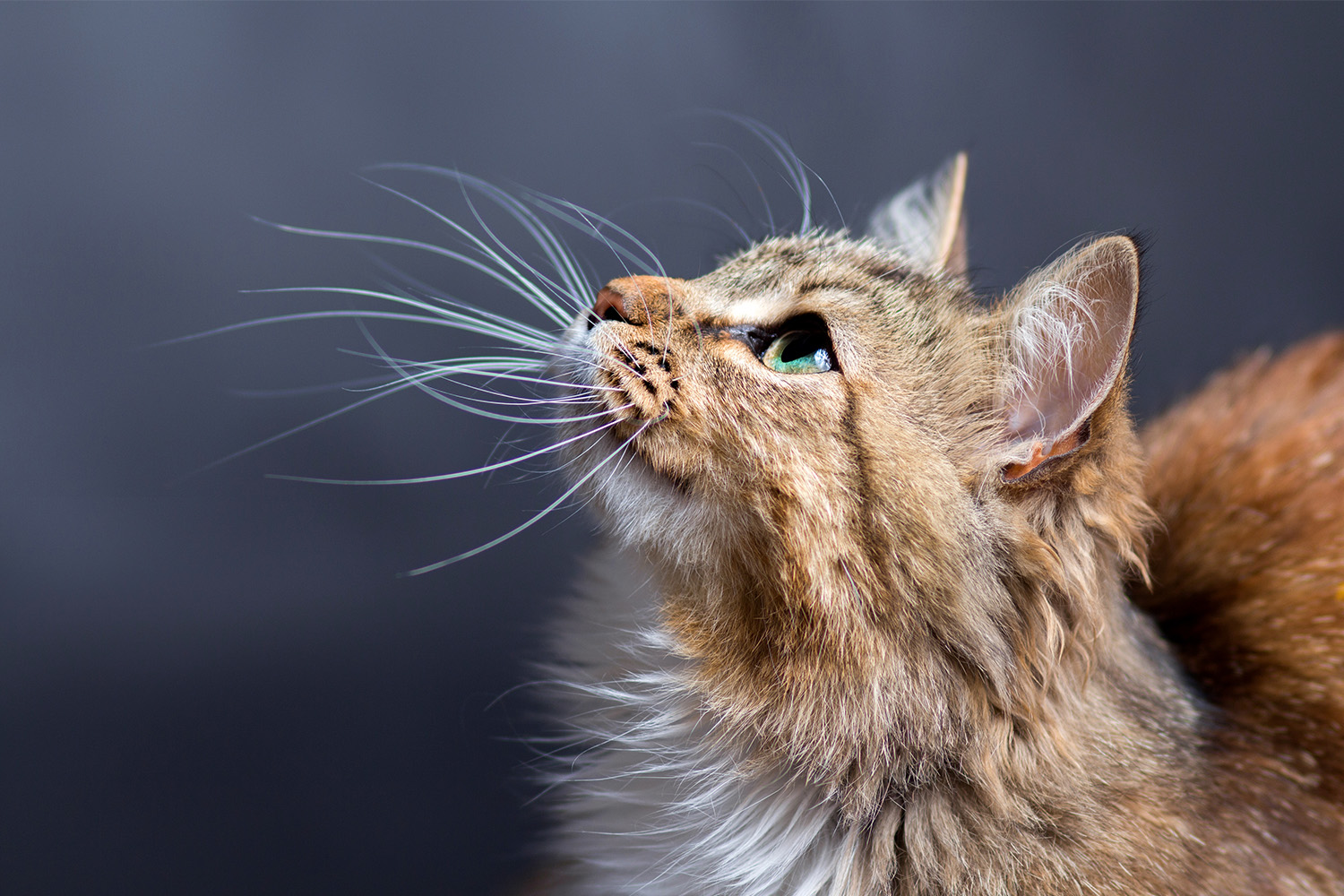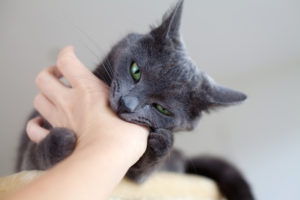Remember drawing a cat when you were young? You put so much care into making perfect triangles for ears and a long curling tail. The finishing touch to your hand-drawn kitty was always two or three whiskers on each side of their face.
A cat’s whiskers are synonymous with their purring and meowing, but exactly why do cats have whiskers, and are they important?
What Are Whiskers Made Of?
If you think that whiskers (AKA vibrissae) resemble hair, then you are on the right path. Whiskers are made of keratin, just like our hair and nails.
Whiskers are a thicker type of sensory hair that is connected to nerves via the hair follicle, which is deeply embedded in your cat’s skin. These hair follicles have their own blood vessels. What’s more, areas in your cat’s brain are also connected to their whiskers via sensory organs called proprioceptors. A true internal radar!
Facial whiskers do fall out on their own, but they do not shed as easily as your cat’s fur. While you may brush your cat’s coat to try to get rid of their shedding hair before it gets all over your home (and you), there are no preemptive measures you would need to take for your cat’s whiskers.
In fact, the best course of action is to leave them alone. Since they are connected to nerves, they are quite sensitive, and it’s best to avoid messing with them.
Why Do Cats Have Whiskers?
While they give our cat a cute appearance, whiskers are more than a facial feature and serve an essential purpose. Like an insect’s antennae or a TV antenna, whiskers help cats tune into signals around them.
There are whiskers in several parts of a cat’s body. However, the most abundant whiskers are on a cat’s face. These tiny tactile hairs grow around their eyes, on their chin, on either side of their nose above their upper lip, and, interestingly enough, on the back of their forelegs. The aforementioned foreleg whiskers are called carpal whiskers.
These whisker signals help cats determine if a space is too small for them and even help them pick up the movements of prey they may be on the hunt for. It’s pretty mind-blowing how much the itty-bitty nerve endings in a cat’s whiskers influence the cat’s behavior!
In addition, some cat breeds have longer whiskers than others. For example, Persians and Maine Coons are known for their exceptionally long whiskers.
Navigation
Being a cat parent, you are well aware of the shenanigans that your furry pal can get into. Among those antics is your cat’s amazing ability to squeeze into small spaces. Their whiskers are to thank for that ability.
Cat’s whiskers serve as a built-in warning system to let your cat know if they are able to fit into a space or not. Your cat’s whiskers usually grow on each side, depending on how wide your cat is. If you have a skinny kitty, their whiskers would be shorter than a more robust feline, who would have longer whiskers to match their roundness.
While knowing if a route is wide enough for passage is helpful, another way whiskers come in handy is when your cat is just going about their day-to-day. If your cat enjoys climbing, running under furniture, or hanging out on top of the fridge, they will use their whiskers to help determine if there is anything near their face – which keeps their eyes, nose, and mouth safe.
This is all very helpful, as kitty vision is not as powerful as their hearing and sense of smell. This is especially helpful for those big cats who hunt for their food. Whiskers pick up any minor disturbance in the air current. This can help a big cat determine how their prey is moving or how close it is.
While your cat may not have to hunt for their dinner, they can still use their whiskers as radar when they play with their countless toys and prowl around for any dropped treats.
Communication
Like their tail, cats can use their whiskers to communicate their feelings. When our cats are in an inquisitive mood, they may raise their whiskers to get a sense of what is going on in a room.
If your cat feels anxious or aggressive (maybe because your dog is bugging them), they will pull their whiskers back tightly against their face. Look for their ears to be pinned back too, as their whiskers and ears will be a duo in non-verbal communication.
Protective Care for Whiskers
While there isn’t anything specific you need to do to protect your cat’s whiskers, there are a few things you can do to keep them from feeling overstimulated. The first is avoiding too much contact with your cat’s whiskers. Although your cat may love to have their chin or cheeks scratched, try not to grab their whiskers.
Another way your cat can be overwhelmed is if you have a deep dish for their water or food. When your cat dips their face in to take a drink or bite of food, their whiskers can touch the edges of the dish. If you see your cat quickly drinking or eating or tilting their head to one side when they do so, their whiskers may have too much contact with the bowl. Switching to a flatter dish will help with this overstimulation.
Another way to protect your feline’s whiskers is to ensure that everyone around them knows their importance to your cat. This includes small children who may think that whiskers are cute and may try to touch or pull them out.
Whiskers For Them – AskVet For You
While your cat has their personal system of navigation, you have your own way of navigating life as a cat parent. AskVet is your system to help you stay focused on your pet’s lifestyle and wellness, so they can live a longer and healthier life. With our 360° Pet Lifestyle Plan, we are with you every step or pawprint of the way.
Book a virtual session with a Certified Pet Lifestyle Expert™, so you can feel empowered to address your pet’s needs confidently. Get answers to your questions and concerns and build a well-rounded care plan for any feline, canine, or reptilian (etc., etc.) family member in your home.
Then, join other pet parents in our online community, the AskVet Clubhouse. You can trade stories, give and get advice, and all the cute anecdotes of being a pet parent.
Sources:
Why Do Animal Have Whiskers | North American Nature
What can whiskers tell us about mammalian evolution, behavior, and ecology? | Mammal Review
The Mechanoreceptors of the Sinus Hair Organ on the Cat’s Foreleg | ScienceDirect








